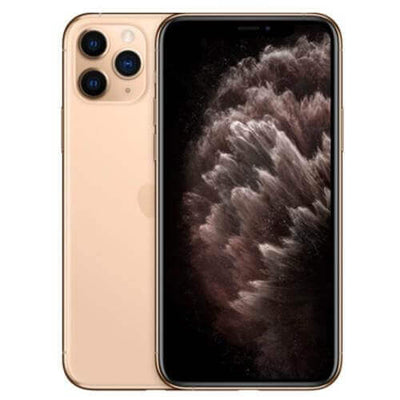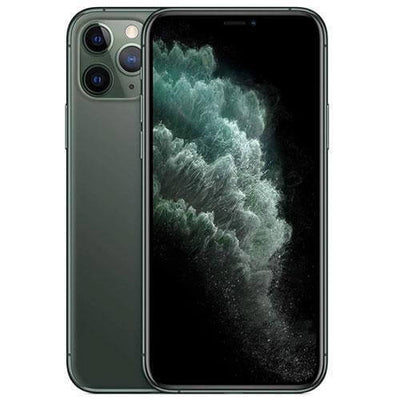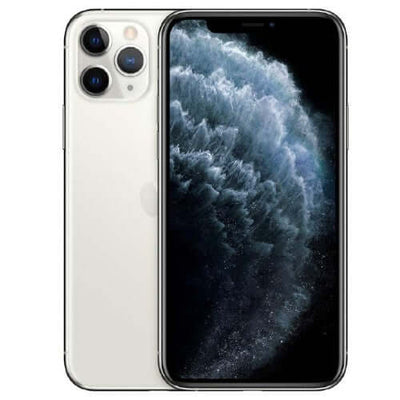Introduction
Hey there!
You know, it's funny how we now look at smartphones and go, "Meh, boring." But rewind to the good old days when Apple dropped the iPhone bomb on us – that was a game-changer! Suddenly, we had this device that was a music player, a phone, and an internet wizard all rolled into one. The excitement was off the charts.
As time rolled on, our expectations started doing the cha-cha. Manufacturers and tech whizzes weren't sitting on their hands – they were pushing limits left and right. Better sensors, new hardware, and apps that made you go, "Whoa, what's next?"
So, in this Fonezone newsletter journey, let's take a stroll down the memory lane of smartphone concept renders. These are like dreams on paper, showcasing how folks pictured the future of smartphones. Spoiler alert: Reality had its own plans, and the gap between dreams and actuality is worth exploring. Let's dive in and reminisce about those wild concepts that made us dream big!
Realistic Expectations
When we delve into the realm of smartphone concepts, it's not uncommon to encounter captivating yet often far-fetched ideas that ignite our imaginations. Amidst the extravagant notions, there are also those concepts grounded in realism that, despite initial excitement, never found their way into the realm of reality.
Consider the iPhone 6 Concept, for instance. Envisioned with an ultra-thin design and an edge-to-edge display, this concept teased a sleek and futuristic device. However, when the actual iPhone 6 was unveiled, it did showcase a commendable thinness but fell short of delivering the bezel-less display promised by the concept.
Then there's the somewhat underwhelming iPhone Mini Concept. Years before Apple introduced the iPhone Mini, a concept surfaced, portraying a device resembling a Magic Mouse with a phone display. The actual iPhone Mini, when eventually released, surpassed the imaginative render, proving to be a more refined and practical device.
In the realm of unfulfilled dreams, there was a visionary concept for the iPhone 5 that remains unrealized to this day. This concept boasted a functional holographic keyboard and a display projector. Although similar experiences are offered by separate gadgets in the market, Apple never incorporated this cutting-edge technology into its iPhones.
These instances highlight the disparity between the aspirations of the tech enthusiasts and the pragmatic realities of product development. While some concepts may appear fantastical, others were firmly rooted in the conceivable but still failed to materialize as part of our smartphone experience.
Exploring Unfulfilled Technological Visions
In the dynamic realm of smartphone development, several intriguing concepts have emerged over the years. Some of these ideas, while grounded in practicality, never managed to find their way into the hands of consumers. Let's delve into a few unrealized innovations:
• The Imagined Future of iPhone 6: Tilting Mechanism and Laser Projected Keyboard
One captivating vision for the iPhone 6 portrayed a device characterized by its ultra-thin profile and an expansive edge-to-edge display. The most compelling aspect of this concept was a tilting mechanism designed to optimize typing angles on the screen. Adding to the allure was the incorporation of a laser projected keyboard, offering a sleek alternative to physical keys. Unfortunately, Apple chose not to incorporate these features into the actual iPhone 6, leaving this futuristic concept unrealized.
• Innovation Finds a Home in Other Devices
While the tilting iPhone 6 concept remained a dream, elements of its vision found their way into other devices. Modern smartphones now boast display projectors, enhancing user experience and functionality. Some phones also embrace movable components, such as pop-up cameras or sliding screens. Although Apple hasn't ventured into convertible phones, other manufacturers have introduced devices capable of transforming seamlessly from a phone to a tablet.
• The Elusive Mass Production of Rollable Phone Designs
Another compelling idea that failed to materialize is the mass production of rollable phone designs. Despite prototypes showcasing phones with flexible displays capable of being rolled around the wrist, the inherent challenges in this form factor hindered widespread production. Manufacturers shifted their focus to more viable implementations of foldable technology, leaving the dream of rollable phones temporarily unrealized.
Navigating the Gap Between Expectations and Reality
These unrealized technological innovations underscore the divide between the imaginative concepts envisioned by tech enthusiasts and the practical constraints faced by the smartphone industry. While some ideas may appear fantastical, others provide a tantalizing glimpse into alternate realities. As the industry continues to evolve, the unfolding narrative of which concepts transition from imagination to reality will undoubtedly captivate the tech-savvy audience.
Samsung's Trailblazing Ideas
When it comes to pushing the envelope in smartphone design, Samsung has always been at the forefront of experimentation. The tech giant has gained a reputation for daring to explore unconventional concepts, leaving tech enthusiasts eagerly anticipating what might come next.
One memorable instance was the speculation surrounding the Galaxy S5's curved display. Rumors were rife that Samsung was gearing up to unveil a smartphone featuring a sleek curved screen, drawing inspiration from the Galaxy Round and LG's G Flex. However, to the disappointment of many, the Galaxy S5 ultimately stuck to a more conventional design, opting out of the curved display trend.
Another ambitious yet unrealized concept from Samsung was the notion of a flexible device doubling as a watch. Imaginative concept designs depicted a phone that could be effortlessly wrapped around the wrist, transforming into a wearable watch. While Samsung did have the technical prowess to create a prototype, the practical challenges associated with this unique form factor led the company to shelve the concept without further pursuit.
Despite these setbacks, Samsung's commitment to pushing the boundaries of smartphone design remains unwavering. In 2020, the company made headlines by filing patents for a transparent phone, signaling a keen interest in exploring cutting-edge technologies. Although the feasibility of transparent display technology on a large scale is uncertain, concept renders have already ignited the curiosity of tech enthusiasts worldwide.
Samsung's experimental ventures underscore the company's dedication to innovation and its readiness to embrace risks. Not every concept sees the light of day, but each one offers a tantalizing peek into the potential future of smartphone design and features. As the smartphone industry continues its evolution, it promises to be an exciting journey to discover which of these groundbreaking concepts will eventually find their way into the hands of consumers.
Exploring Future Smartphone Innovations
Samsung has consistently been a trailblazer in the realm of smartphone technology, and their penchant for pushing the boundaries is evident in their exploration of concept designs. Back in 2020, Samsung made headlines by filing patents for a transparent phone, setting off a wave of speculation about the potential trajectory of smartphone design.
One of the particularly captivating concepts that emerged from these patent filings involves a transparent display, presenting the intriguing possibility of users seeing through their phones. This innovative technology has the potential to redefine how we engage with our devices, introducing a heightened level of transparency and immersion.
Enthusiasts in the tech community have already been captivated by conceptual renders of a transparent phone. These images depict a device with a sleek and futuristic design seamlessly incorporating the transparent display technology. Imagine a world where users can effortlessly view notifications, messages, and apps on their device without any obstruction to their line of sight.
While the prospect of a transparent phone from Samsung is undeniably exciting, it's crucial to temper expectations by considering the practicality of implementing such technology. Transparent displays are already a possibility, but integrating them into mass-produced phones presents a unique set of challenges. Key considerations include ensuring durability, managing power consumption, and addressing potential manufacturing costs.
It's important to acknowledge that not every intriguing idea translates into a tangible product. Realistic expectations are crucial, as concept renders and patents provide a tantalizing glimpse into potential futures. The path to innovation in the smartphone industry demands careful evaluation of market demand, technological constraints, and user experience.
As the landscape of the smartphone industry undergoes continuous transformation, contemplating the possibilities of transparent display technology is nothing short of fascinating. While the realization of a transparent phone may not be imminent, the concept designs and patents, such as Samsung's transparent phone, serve as windows into the boundless potential for future smartphone innovations.
The Pixel Ultra Controversy
Let's talk about one of the most talked-about smartphone concept controversies in recent times—the Pixel Ultra. The buzz and debates surrounding this device added a mix of confusion and thrill to the tech community.
It all kicked off with leaks and rumors circulating about an alleged third addition to Google's Pixel series, labeled as the Pixel Ultra. Conceptual images and speculative discussions fueled the excitement, hinting at a surprise from Google for its fourth-generation phones.
As time progressed, it became increasingly evident that the Pixel Ultra was merely a product of collective imagination. Despite the widespread anticipation, Google never unveiled a Pixel Ultra.
This entire episode serves as a gentle reminder for tech enthusiasts to handle their expectations with care. While concept designs and rumors can be thrilling, it's crucial to approach them with a dose of skepticism. Drawing a line between reality and speculation is key, preventing us from getting carried away by unrealistic expectations.
Instances like the Pixel Ultra underscore the disparity between what we wish for and what actually materializes in the tech world. While it might be disheartening when a promising concept doesn't come to fruition, it also highlights the intricate challenges involved in bringing new technologies to the market.
For tech enthusiasts, striking a balanced perspective is essential. Revel in the excitement and discussions surrounding concepts and rumors, but also acknowledge that not every intriguing idea transforms into a tangible product. By managing expectations, we can better appreciate the breakthroughs that do eventually find their way into the hands of consumers.
FAQ
1. Why do smartphone concepts often fail to become a reality?
Smartphone concepts frequently fall short of becoming a reality due to their foundation in ambitious and sometimes impractical ideas. Even as manufacturers and developers strive to push technological boundaries, not all envisioned features and technologies prove feasible or pragmatic for widespread implementation. Considerations such as cost, manufacturing constraints, and market demand play pivotal roles in determining which concepts transition from imagination to actual products.
2. Are there any futuristic ideas that have become a reality?
Absolutely, there have been instances where futuristic ideas materialized in the smartphone industry. Innovations like edge-to-edge displays, display projectors, and phones with moving parts have found their way into modern smartphones in various forms. However, it's important to acknowledge that not every futuristic idea gains widespread adoption or becomes a mainstream feature, primarily due to a myriad of challenges and limitations.
3. What role do leaks and rumors play in shaping expectations?
Leaks and rumors wield considerable influence in shaping expectations within the tech community. They generate excitement and anticipation for upcoming devices by offering glimpses into potential features and designs. It's crucial, however, to approach leaks and rumors with a degree of caution, recognizing that they often stem from incomplete or inaccurate information. Skillfully managing expectations and discerning fact from fiction is essential to sidestep potential disappointment.
4. Why is it important to manage expectations as a tech enthusiast?
Managing expectations as a tech enthusiast holds significance in mitigating disappointment and frustration. While it's natural to feel excitement about new concepts and rumors, understanding that not all ideas will manifest in real-world products is paramount. Grasping the intricate challenges involved in bringing novel technologies to market helps tech enthusiasts appreciate the innovations that successfully integrate into consumer devices.




















